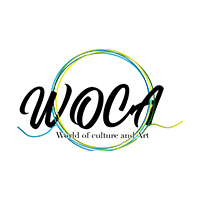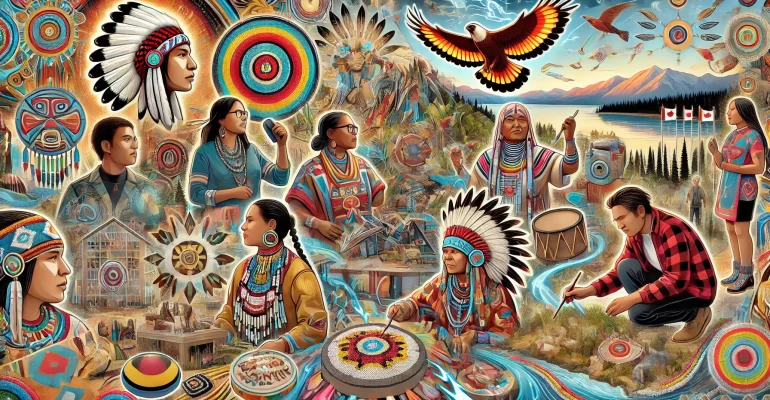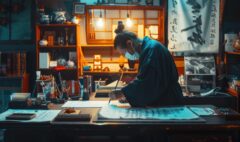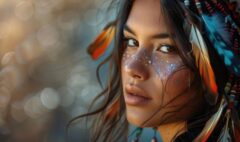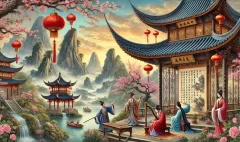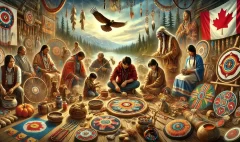7 greatest indigenous artists who are still alive
7 greatest indigenous artists who are still alive
Canada is home to many talented Indigenous artists who work in different mediums and styles. Their art reflects the rich cultural heritage and modern experiences of Indigenous peoples. These artists challenge stereotypes, celebrate resilience, and offer deep insights into identity, history, and social justice. In this blog post, we will look at seven of the greatest Indigenous artists in Canada. Their contributions have greatly enriched the cultural landscape and continue to inspire future generations.
These artists have gained national and international recognition for their unique perspectives and innovative practices. They also play important roles in advocating for Indigenous rights and preserving their cultural heritage. Join us as we explore the stories and masterpieces of these remarkable individuals, whose artistic journeys highlight the blend of tradition and modernity in Indigenous art.
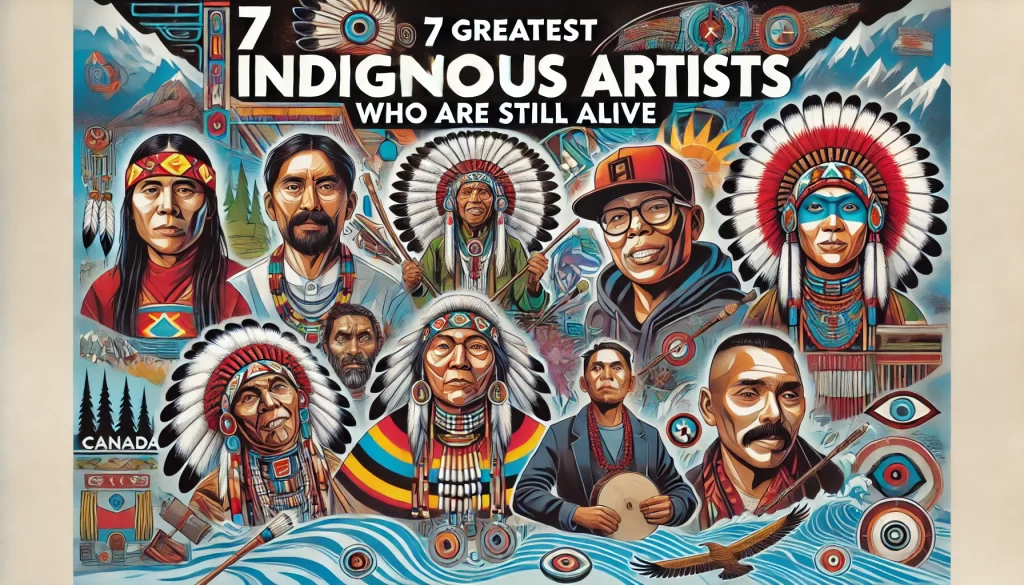
Here are ten artists who have made significant contributions:
- Kent Monkman: A contemporary artist who uses humor and satire to address issues of colonialism and Indigenous identity.
- Christi Belcourt: Known for her beadwork-inspired paintings and her activism for Missing and Murdered Indigenous Women.
- Tanya Tagaq: A powerful Inuk throat singer and performance artist who blends traditional Inuit culture with contemporary music.
- Alex Janvier: A Metis artist whose work reflects the spiritual and cultural heritage of his people.
- Marlene Creates: An Innu artist who explores themes of land, identity, and spirituality through her art.
- Brian Jungen: A Dene artist who challenges perceptions of Indigenous culture through his innovative use of materials.
- Shelley Niro: A Mohawk artist whose work addresses issues of gender, identity, and colonialism.
Kent Monkman: Bridging Cultures Through Art
Kent Monkman is a contemporary Canadian artist known for his provocative and thought-provoking works that challenge historical narratives and explore themes of colonization, sexuality, and Indigenous identity. As a Cree artist, Monkman’s unique perspective and creative expression have made him a significant figure in the art world.
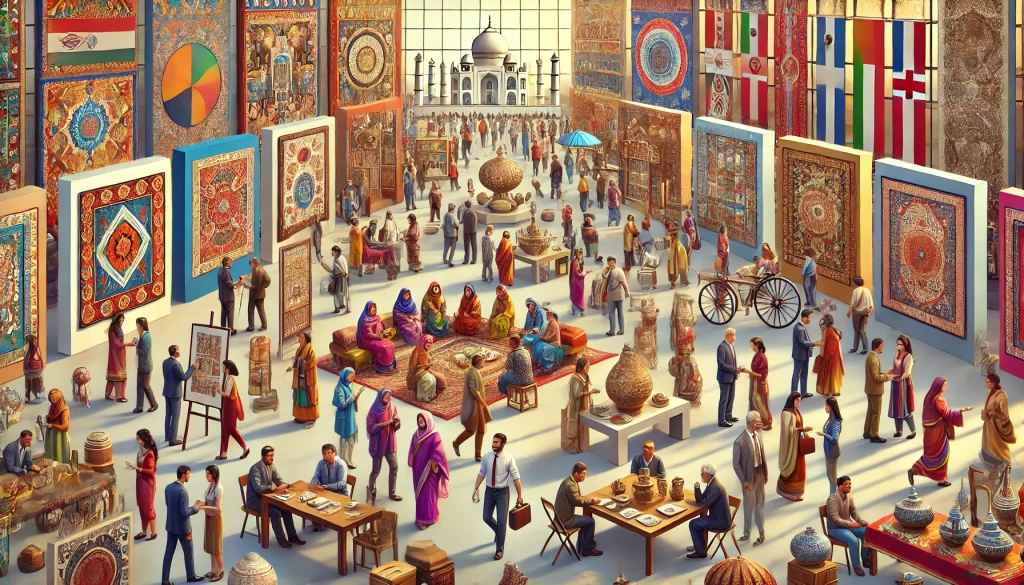
- Birth and Heritage
Kent Monkman was born in 1965 in St. Marys, Ontario, and is of Cree and Irish descent. He grew up in Winnipeg, Manitoba, where he was exposed to both Western and Indigenous cultures, which would later influence his art.
- Education
Monkman studied at Sheridan College in Ontario and the Banff Centre for the Arts. His formal training in various artistic disciplines laid the foundation for his multifaceted approach to art.
- Artistic Career; Themes and Style
Monkman’s work often addresses the complex histories and present realities of Indigenous peoples in Canada. He uses a variety of mediums, including painting, film, performance, and installation art, to convey his messages. His art is known for its vivid and often confrontational imagery, blending classical European painting techniques with Indigenous perspectives.
- Alter Ego: Miss Chief Eagle Testickle
One of Monkman’s most notable creations is his alter ego, Miss Chief Eagle Testickle, a glamorous, gender-fluid persona who appears in many of his works. Through Miss Chief, Monkman critiques colonialism, heteronormativity, and the romanticized portrayal of Indigenous peoples in historical art.
- Notable Works
“The Scream”: A powerful painting that depicts the traumatic impact of residential schools on Indigenous families.
“Bears of Confederation”: An installation that reimagines Canadian history through an Indigenous lens.
“The Triumph of Mischief”: A large-scale painting that features Miss Chief Eagle Testickle subverting traditional historical narratives.
- Key Achievements
Monkman has exhibited his work internationally, including at prestigious institutions such as the Metropolitan Museum of Art in New York, the Royal Ontario Museum in Toronto, and the Montreal Museum of Fine Arts. His work has garnered critical acclaim for its bold and unapologetic approach to addressing complex social issues.
- Awards and Honors
Monkman has received numerous awards, including the Ontario Premier’s Award for Excellence in the Arts and the Hnatyshyn Foundation Visual Arts Award. His contributions to the art world have been recognized for their innovation and cultural significance.
- Personal Life; Cultural Advocate
Beyond his artistic practice, Monkman is an advocate for Indigenous rights and cultural preservation. He uses his platform to raise awareness about the historical and ongoing injustices faced by Indigenous communities in Canada and around the world.
Influence and Legacy
- Impact on Contemporary Art
Kent Monkman’s work has had a profound impact on contemporary art, challenging audiences to reconsider historical narratives and recognize the resilience and diversity of Indigenous cultures. His unique blend of humor, critique, and historical insight has made his art both accessible and deeply meaningful.
- Educational Contributions
Monkman’s art is frequently used in educational contexts to teach about Indigenous history and contemporary issues. His works serve as powerful tools for dialogue and reflection, encouraging viewers to engage with difficult topics in a thoughtful and informed manner.
Christi Belcourt: Celebrating Indigenous Culture Through Art
Christi Belcourt is a renowned Métis artist, author, and environmental activist whose work beautifully intertwines traditional Indigenous art forms with contemporary themes. Her vibrant and intricate pieces celebrate the natural world, Indigenous culture, and advocate for environmental and social justice.
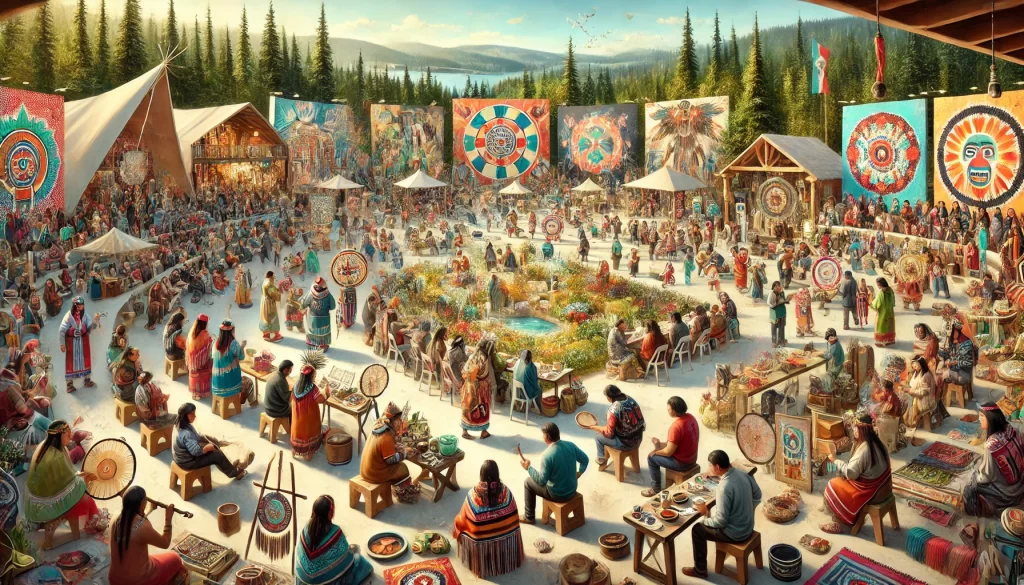
- Birth and Heritage
Christi Belcourt was born on September 24, 1966, in Scarborough, Ontario. She is a proud member of the Métis Nation of Alberta, with roots that trace back to the historic Métis communities of the Canadian Prairies.
- Family Influence
Belcourt grew up in a family deeply connected to its Indigenous heritage. Her father, Tony Belcourt, is a prominent Métis rights leader, which greatly influenced her understanding and appreciation of her cultural roots.
- Artistic Career; Themes and Style
Belcourt’s art is characterized by its detailed, beadwork-like patterns painted on canvas. Her works often reflect themes of nature, spirituality, and Indigenous knowledge. She is known for her meticulous technique, which mimics traditional Métis beadwork, creating stunning, vibrant images of flora and fauna.
- Notable Works
“The Wisdom of the Universe”: This large-scale painting features intricate patterns of plants and animals, symbolizing the interconnectedness of all life and the wisdom inherent in nature.
“Walking With Our Sisters”: A commemorative art installation honoring missing and murdered Indigenous women, girls, and Two-Spirit people. The installation includes over 1,800 pairs of moccasin vamps (tops), representing the lives lost.
- Collaborations
Belcourt has collaborated with various artists and organizations to promote Indigenous art and culture. Notably, she has worked with fashion designers to create collections that highlight Indigenous designs and craftsmanship.
- Key Achievements
Belcourt’s work has been widely exhibited and recognized for its artistic excellence and cultural significance. She has received numerous awards, including:
- Governor General’s Innovation Award: For her contribution to the arts and cultural heritage.
- 2016 Premier’s Award for Excellence in the Arts: Recognizing her outstanding achievements and impact on Canadian art.
- Environmental and Social Advocacy
Belcourt is an active environmentalist and social justice advocate. She uses her art to raise awareness about environmental issues, particularly those affecting Indigenous lands and communities. Her activism is intertwined with her artistic practice, emphasizing the importance of protecting the natural world and Indigenous rights.
- Personal Life; Community Engagement
Belcourt is deeply involved in her community, working to promote Indigenous culture and education. She conducts workshops and participates in initiatives aimed at preserving Indigenous languages, traditions, and ecological knowledge.
- Influence and Legacy; Impact on Indigenous Art
Christi Belcourt has made significant contributions to the resurgence of Indigenous art in Canada. Her work not only preserves traditional Métis beadwork techniques but also brings them into a contemporary context, making them accessible to a broader audience.
- Educational Contributions
Belcourt’s art is used as an educational tool to teach about Métis culture, environmental stewardship, and social justice. Her detailed and symbolic pieces offer rich material for discussions on Indigenous knowledge and the importance of cultural preservation.
Tanya Tagaq: A Trailblazing Voice in Inuit Throat Singing
Tanya Tagaq is an internationally acclaimed Inuk throat singer, known for her innovative and powerful performances that blend traditional Inuit throat singing with contemporary music styles. Her work has brought Inuit culture to a global audience, while also addressing important social and environmental issues.
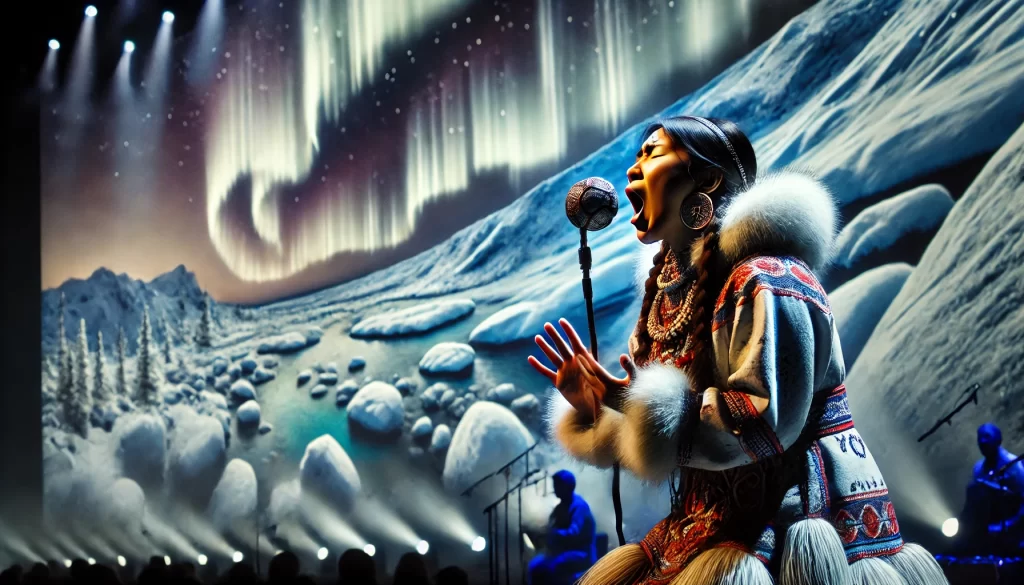
- Birth and Heritage
Tanya Tagaq was born on May 5, 1975, in Cambridge Bay (Iqaluktuuttiaq), Nunavut, Canada. She is of Inuk heritage and grew up in a remote Arctic community, deeply immersed in Inuit culture and traditions.
- Education and Early Influences
Tagaq moved to Yellowknife, Northwest Territories, for high school, and later attended the Nova Scotia College of Art and Design, where she studied visual arts. It was during her time away from home that she began to reconnect with her Inuit roots through throat singing, a traditional vocal practice.
- Musical Career; Traditional Inuit Throat Singing
Inuit throat singing, traditionally performed by two women standing face-to-face, involves a rhythmic exchange of guttural sounds. Tagaq, however, developed a solo form of throat singing, which allowed her to explore the art form in new and innovative ways.
- Albums and Notable Works
“Sinaa” (2005): Tagaq’s debut album, which received critical acclaim and established her as a unique voice in the music world.
“Animism” (2014): This album won the prestigious Polaris Music Prize and showcased her ability to blend throat singing with various musical genres, from punk to electronica.
“Retribution” (2016): An album that addresses themes of environmental destruction, colonialism, and social justice, further solidifying her role as an outspoken advocate for Indigenous issues.
- Collaborations
Tagaq has collaborated with a diverse range of artists, including Björk, the Kronos Quartet, and the Toronto Symphony Orchestra. These collaborations have expanded the reach of her music and introduced throat singing to new audiences.
- Key Achievements
Tagaq’s innovative work has earned her numerous awards and accolades, including:
Polaris Music Prize: For her album “Animism.”
Juno Awards: Multiple nominations and wins, highlighting her impact on Canadian music.
Governor General’s Performing Arts Award: Recognizing her outstanding contributions to the arts.
- Advocacy and Activism
Tagaq is a passionate advocate for Indigenous rights, environmental protection, and women’s issues. She uses her platform to speak out on behalf of Inuit communities and to raise awareness about the impacts of climate change on the Arctic.
- Personal Life; Family and Community
Tagaq remains deeply connected to her Inuit heritage and community. She often returns to Nunavut and is committed to preserving and promoting Inuit culture and traditions.
- Influence and Legacy
Tagaq’s work has redefined Inuit throat singing, bringing it into contemporary music and challenging audiences to reconsider their perceptions of Indigenous art. Her powerful performances and outspoken activism have inspired many, making her a role model for both Indigenous and non-Indigenous people alike.
Alex Janvier: A Master of Indigenous Modern Art
Alex Janvier is a pioneering Canadian Indigenous artist known for his vibrant and abstract paintings that merge Indigenous themes with modernist techniques. As a member of the Dene Suline and Saulteaux nations, Janvier has made significant contributions to the art world, highlighting Indigenous perspectives and stories through his unique style.
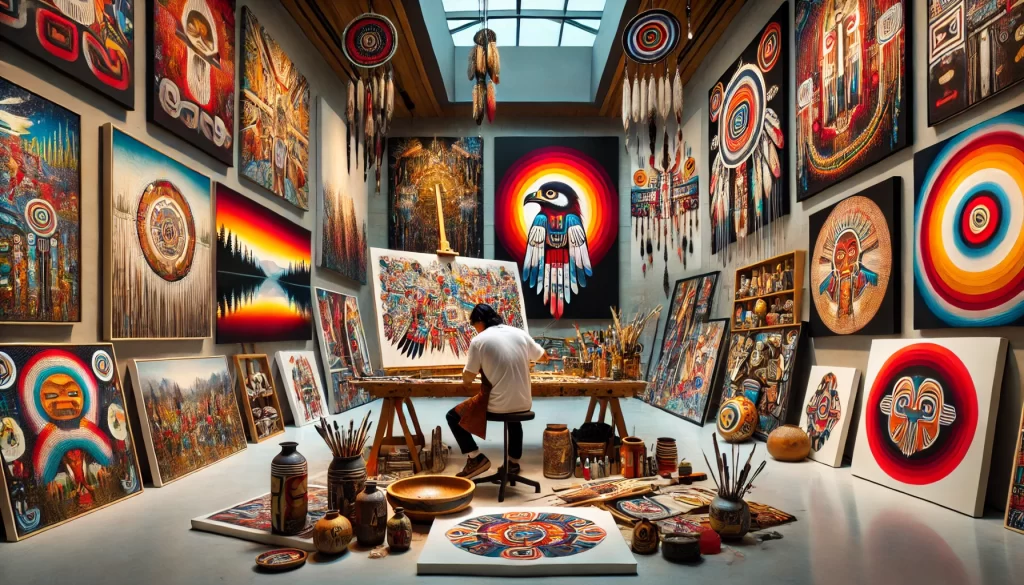
- Birth and Heritage
Alex Janvier was born on February 28, 1935, in Le Goff Reserve, Cold Lake First Nations, Alberta. He is of Dene Suline and Saulteaux heritage, which profoundly influences his art.
- Education
Janvier attended the Blue Quills Indian Residential School in Alberta, where he first discovered his talent for art. He later studied at the Alberta College of Art in Calgary, graduating with honors in 1960. His formal education provided him with technical skills and exposure to modernist art, which he integrated with his Indigenous background.
- Artistic Career; Themes and Style
Janvier’s work is known for its abstract forms, vivid colors, and flowing lines, often described as “visual poetry.” His paintings frequently explore themes of nature, Indigenous culture, spirituality, and the impact of colonization. He uses a blend of modernist styles and traditional Indigenous motifs, creating a unique visual language.
- Notable Works
“Morning Star” (1993): A large mural located in the dome of the Canadian Museum of History in Gatineau, Quebec. This work symbolizes the cultural history of Indigenous peoples in Canada.
“Blood Tears” (2001): A powerful painting reflecting the trauma and resilience of Indigenous communities.
“Tsuu T’ina”: Celebrates the culture and history of the Tsuu T’ina Nation.
- Exhibitions and Collections
Janvier’s works have been exhibited nationally and internationally. His paintings are part of major collections, including the National Gallery of Canada, the Art Gallery of Alberta, and numerous private collections.
- Key Achievements
Janvier has received numerous accolades for his contributions to art and culture, including:
Order of Canada (2007): One of the country’s highest civilian honors, recognizing his significant impact on Canadian art.
Governor General’s Award in Visual and Media Arts (2008): For his outstanding artistic achievements.
Alberta Order of Excellence (2010): Honoring his contributions to the cultural heritage of Alberta.
- Cultural Impact
As one of the founding members of the Professional Native Indian Artists Inc., also known as the “Indian Group of Seven,” Janvier played a crucial role in advocating for Indigenous art and artists in Canada. This group worked to promote the recognition and appreciation of Indigenous art as a vital part of Canadian culture.
- Personal Life; Community Engagement
Janvier remains deeply connected to his community and is committed to preserving and promoting Indigenous culture. He has mentored young Indigenous artists and continues to inspire future generations through his work and advocacy.
- Influence and Legacy; Impact on Indigenous Art
Alex Janvier is celebrated for his ability to bridge Indigenous traditions with contemporary art forms, creating works that are both deeply personal and universally resonant. His art challenges and expands the boundaries of Indigenous and Canadian art, encouraging a greater understanding and appreciation of Indigenous perspectives.
- Educational Contributions
Janvier’s work is often used in educational contexts to teach about Indigenous history, culture, and the impact of colonization. His paintings provide rich visual narratives that facilitate discussions on these important topics.
Marlene Creates: An Environmental and Conceptual Artist
Marlene Creates is a distinguished Canadian environmental and conceptual artist whose work focuses on the relationship between human beings and the natural world. Through photography, sculpture, and site-specific installations, she explores themes of place, memory, ecology, and the passage of time.
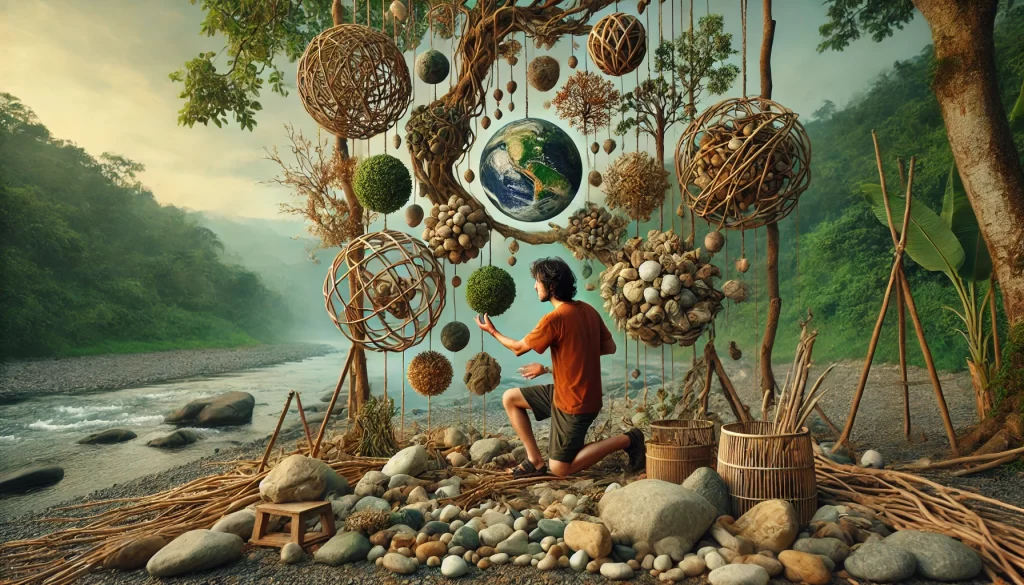
- Birth and Heritage
Marlene Creates was born in 1952 in Montreal, Quebec. Her family heritage is of Scottish and Irish descent, and this multicultural background has influenced her perspective on place and identity.
- Education
Creates studied visual arts at Queen’s University in Kingston, Ontario, where she developed a strong foundation in conceptual art practices. Her education played a significant role in shaping her approach to art, emphasizing the importance of context and environment.
- Artistic Career; Themes and Style
Creates’ work is characterized by its deep connection to specific places, particularly natural landscapes. She often uses photography to document ephemeral interventions in the landscape, highlighting the transient and fragile nature of human interactions with the environment.
- Notable Works
“The Boreal Poetry Garden”: A long-term project located on her six-acre property in Newfoundland, where she combines poetry and nature walks to engage visitors with the land’s history and ecology.
“Sleeping Places” (1982-83): A series of photographs capturing the impressions left by her body as she lay on various natural surfaces, emphasizing the intimate and temporary relationship between humans and the earth.
“Brickle, Nish, and Knobbly” (2005-2011): A photographic series documenting the unique features and ecological changes of her Newfoundland property over several years.
- Exhibitions and Collections
Creates’ work has been exhibited nationally and internationally, including at the National Gallery of Canada, The Rooms Provincial Art Gallery in Newfoundland, and the Dalhousie Art Gallery in Nova Scotia. Her pieces are part of several significant public and private collections.
- Key Achievements; Awards and Recognition
Creates has received numerous awards and honors for her contributions to art and environmental awareness, including:
Governor General’s Award in Visual and Media Arts (2019): For her exceptional achievements in the visual arts.
CARFAC National Visual Arts Advocacy Award (2009): Recognizing her efforts to support artists’ rights and promote visual arts in Canada.
Honorary Doctorates: From Memorial University of Newfoundland and the University of New Brunswick, acknowledging her influence and contributions to art and environmental education.
- Publications and Collaborations
Creates has published several books and articles that reflect on her artistic practice and environmental philosophy. She has also collaborated with poets, writers, and other artists to create multidisciplinary works that explore the connections between art, language, and the natural world.
- Personal Life; Living and Working in Newfoundland
Creates moved to Newfoundland in 1985, where she continues to live and work. Her deep engagement with the Newfoundland landscape is a central element of her art, reflecting her commitment to understanding and documenting the unique ecological and cultural characteristics of this region.
- Community Involvement
Creates is actively involved in her local community, often leading workshops, lectures, and environmental projects. She works to foster a greater appreciation for the natural world and the importance of preserving it for future generations.
- Influence and Legacy; Impact on Environmental Art
Marlene Creates is a prominent figure in environmental art, known for her thoughtful and immersive approach to exploring the relationship between people and places. Her work encourages viewers to consider their own connections to the natural world and the impact of their presence on the environment.
- Educational Contributions
Creates’ art is used in educational settings to teach about environmental stewardship, the significance of place, and the role of art in understanding and documenting ecological change. Her projects serve as powerful examples of how art can inspire a deeper connection to and respect for the natural world.
Brian Jungen: Transforming Everyday Objects into Powerful Art
Brian Jungen is a prominent Canadian artist known for his innovative use of everyday objects to create thought-provoking sculptures and installations. His work addresses themes of identity, globalization, consumerism, and Indigenous culture, making him a significant figure in contemporary art.
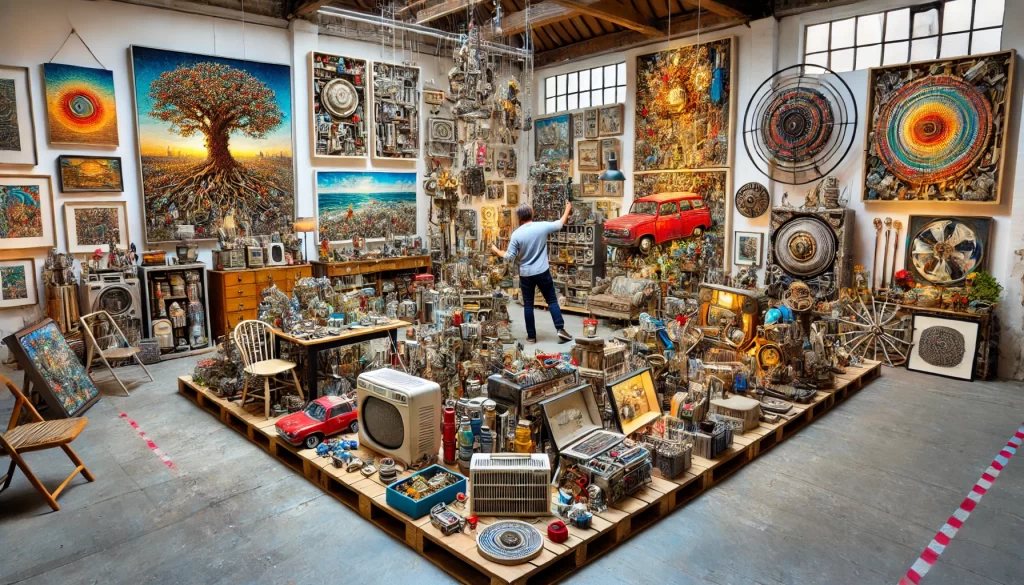
- Birth and Heritage
Brian Jungen was born in 1970 in Fort St. John, British Columbia. He is of Dane-zaa (also known as Beaver) First Nations and Swiss-Canadian descent. This dual heritage profoundly influences his art, which often explores themes related to cultural identity and the blending of different traditions.
- Education
Jungen studied at the Emily Carr Institute of Art and Design in Vancouver, where he graduated with a diploma in Visual Art. His education provided a strong foundation in contemporary art practices and critical theory, which he later integrated with his Indigenous heritage.
- Artistic Career; Themes and Style
Jungen is renowned for his ability to transform mass-produced consumer goods into intricate sculptures that reference Indigenous art forms and cultural symbols. His work challenges viewers to reconsider their perceptions of everyday objects and the cultural narratives they carry.
- Notable Works
“Prototypes for New Understanding” (1998-2005): A series of sculptures made from disassembled Nike Air Jordan sneakers, reconfigured to resemble Northwest Coast Indigenous masks. This series is a critical commentary on cultural appropriation and globalization.
“Shapeshifter” (2000): A large sculpture made from plastic lawn chairs, resembling a whale skeleton, highlighting themes of environmental impact and the commodification of nature.
“Cetology” (2002): Another whale skeleton made from plastic chairs, displayed alongside “Shapeshifter,” emphasizing the contrast between natural forms and synthetic materials.
- Exhibitions and Collections
Jungen’s work has been exhibited internationally, including at the Tate Modern in London, the Smithsonian National Museum of the American Indian in Washington, D.C., and the Art Gallery of Ontario. His pieces are part of numerous public and private collections, reflecting his global impact.
- Key Achievements
Jungen has received several prestigious awards for his contributions to contemporary art, including:
Sobey Art Award (2002): One of Canada’s most significant art prizes, recognizing his innovative approach and influence on the art world.
Vancouver Art Gallery’s Audain Prize for Lifetime Achievement in the Visual Arts (2010): Honoring his substantial contributions to Canadian art.
- Cultural Impact
Jungen’s work has been instrumental in raising awareness about the complexities of cultural identity and the impact of globalization. By using everyday objects to create art that resonates with both Indigenous and contemporary themes, he bridges diverse cultural narratives and prompts critical reflection.
- Personal Life; Connection to Heritage
Jungen maintains a strong connection to his Dane-zaa heritage, which is a central theme in his work. He often draws inspiration from traditional Indigenous art forms and stories, reinterpreting them through the lens of contemporary issues and materials.
- Community Engagement
Jungen is involved in various community projects and educational initiatives, working to support Indigenous artists and promote cultural understanding. He frequently participates in artist residencies, workshops, and lectures, sharing his knowledge and experiences with emerging artists and broader audiences.
- Influence and Legacy; Impact on Contemporary Art
Brian Jungen is celebrated for his ability to transform mundane objects into powerful symbols of cultural critique and identity. His work challenges conventional boundaries between art and everyday life, encouraging viewers to question their assumptions about culture, consumerism, and the environment.
- Educational Contributions
Jungen’s art is widely used in educational contexts to discuss topics such as cultural appropriation, environmental sustainability, and the role of art in social commentary. His innovative approach provides a rich resource for exploring the intersections of art, culture, and society.
Shelley Niro: A Visionary of Indigenous Art and Film
Shelley Niro is a celebrated Mohawk visual artist and filmmaker known for her powerful and multifaceted works that explore themes of Indigenous identity, culture, and history. Her innovative approach and compelling storytelling have made her a significant figure in contemporary Indigenous art and cinema.
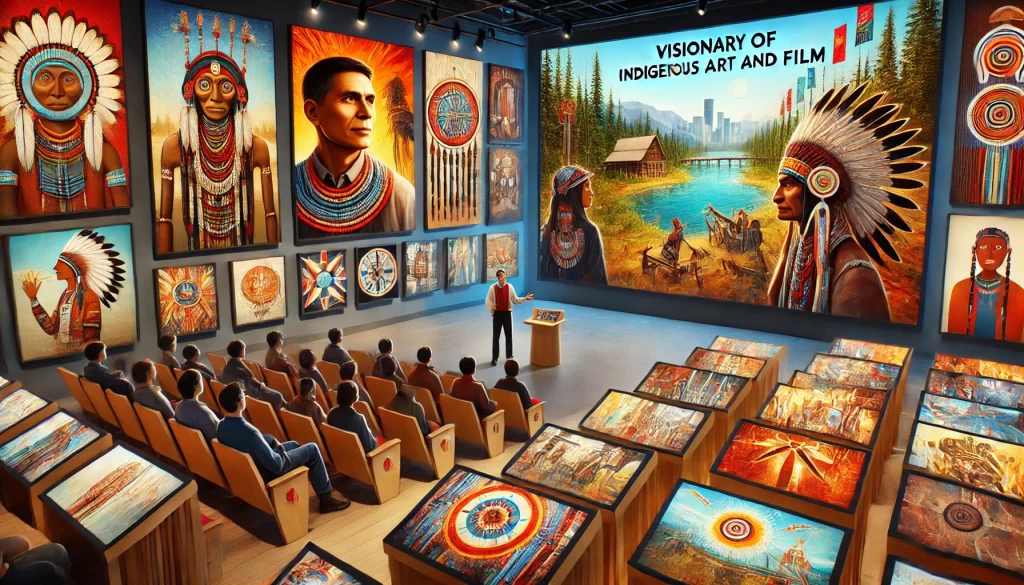
- Birth and Heritage
Shelley Niro was born in 1954 in Niagara Falls, New York, and is a member of the Six Nations Reserve, Turtle Clan, Mohawk Nation. Her heritage and upbringing on the Six Nations Reserve have deeply influenced her artistic practice, grounding her work in the experiences and perspectives of Indigenous communities.
- Education
Niro studied at the Ontario College of Art and Design (OCAD), where she earned a Bachelor of Fine Arts. She also holds a Master of Fine Arts from the University of Western Ontario. Her formal education provided her with a broad foundation in visual arts, which she has expanded through her exploration of various mediums and themes.
- Artistic Career; Themes and Style
Niro’s work often challenges stereotypes and misconceptions about Indigenous people, presenting multifaceted narratives that celebrate Indigenous resilience, culture, and humor. Her style is eclectic, encompassing photography, painting, beadwork, and film, allowing her to address a wide range of topics and audiences.
- Notable Works
“The Shirt” (2003): A poignant photographic series in which a woman wears a T-shirt printed with satirical statements about the history and treatment of Indigenous people in North America. This work critiques colonialism and the ongoing impacts of historical injustices.
“Kissed by Lightning” (2009): A feature film that blends contemporary storytelling with traditional Haudenosaunee legends. The film follows a Mohawk painter who reconnects with her heritage and finds healing through her art.
“Mohawk Warrior” (1990): A series of photographs and mixed media works that explore the strength and resilience of Mohawk identity, inspired by the Oka Crisis and the resistance of Indigenous communities.
- Exhibitions and Collections
Niro’s work has been exhibited extensively across Canada and internationally. Her pieces are held in major collections, including the National Gallery of Canada, the Art Gallery of Ontario, and the Smithsonian Institution’s National Museum of the American Indian.
- Key Achievements
Niro has received numerous accolades for her contributions to art and film, including:
Governor General’s Award in Visual and Media Arts (2017): For her outstanding achievements and influence in the visual arts.
Scotiabank Photography Award (2018): Recognizing her significant impact on Canadian photography.
Honourary Doctorate from OCAD University: Acknowledging her contributions to art and education.
- Cultural Impact
Niro’s work has been instrumental in raising awareness about Indigenous issues and perspectives. Her ability to blend humor, critique, and cultural celebration has made her a prominent voice in the dialogue about Indigenous identity and representation in the arts.
- Personal Life; Community Engagement
Niro is deeply involved in her community and often collaborates with other Indigenous artists and organizations. She is committed to mentoring young Indigenous artists and filmmakers, helping to nurture the next generation of creative talent.
- Influence and Legacy; Impact on Indigenous Art and Film
Shelley Niro is celebrated for her innovative and impactful work that challenges stereotypes and offers new narratives about Indigenous people. Her multidisciplinary approach and compelling storytelling have expanded the scope of Indigenous art and film, making her a key figure in contemporary cultural discourse.
- Educational Contributions
Niro’s art and films are widely used in educational settings to teach about Indigenous history, culture, and the ongoing impacts of colonization. Her works provide rich material for discussions on identity, resilience, and the power of art as a tool for social change.
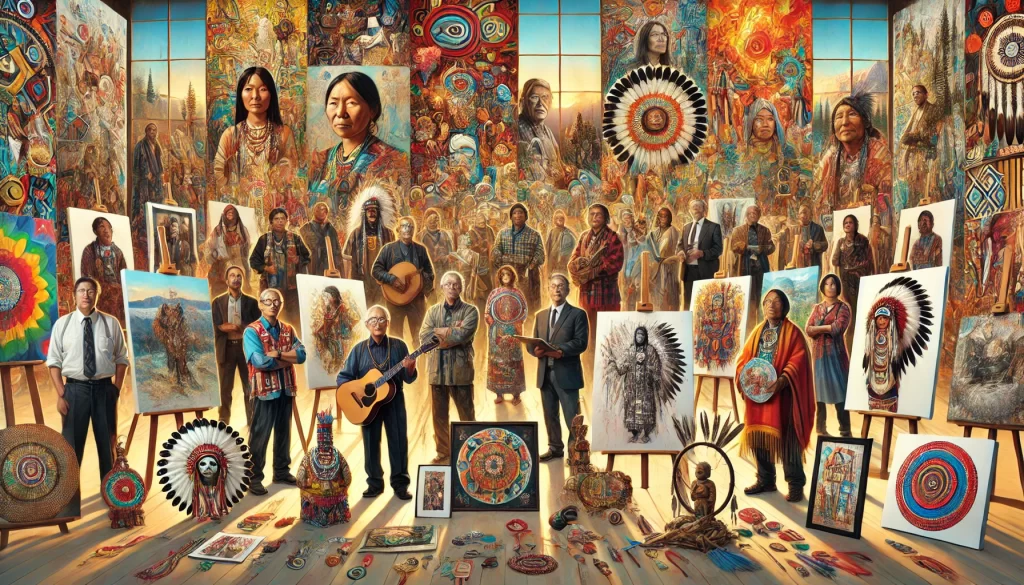
Conclusion
The ten Indigenous artists featured in this blog post represent just a small part of the amazing talent within Canada’s Indigenous communities. Their work not only enriches the nation’s culture but also shows the enduring strength and beauty of Indigenous cultures. Through their art, these artists challenge, inspire, and educate, helping us understand and appreciate Indigenous perspectives more deeply.
As we celebrate the achievements of these artists, it is important to recognize the ongoing contributions of Indigenous artists across Canada. Their voices and visions are vital to the growth of contemporary art and the broader cultural conversation. By supporting and promoting Indigenous art, we can help ensure that these important stories and traditions are preserved and celebrated for generations to come.
